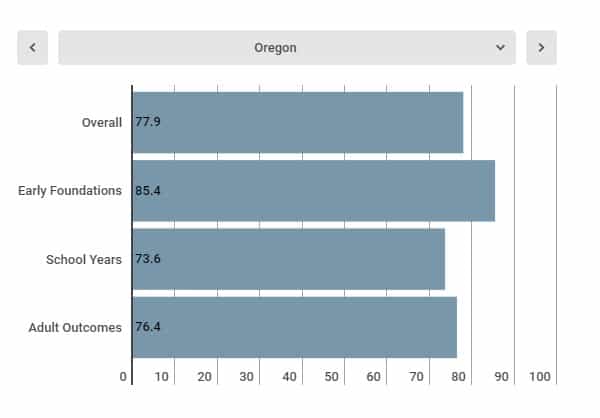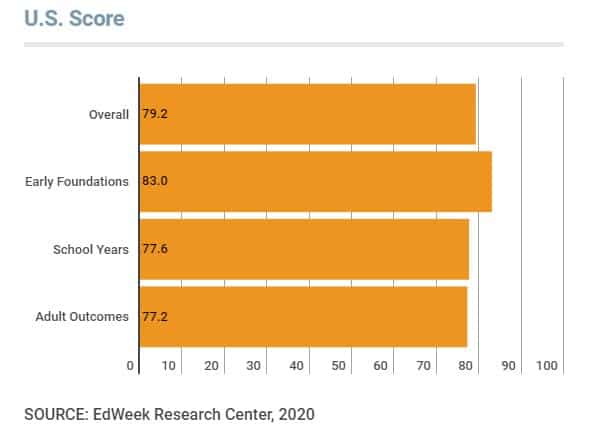
by Helen Shum | Mar 14, 2020 | Federal Policy, Oregon Policy, Announcements, COVID-19
As the fallout from COVID-19 begins to impact nearly all aspects of life in the United States, political leaders at the local, state, and federal levels are all grappling with how best to preserve public health and mitigate economic and other damage related to the virus.
Members of Congress are working now on a bill that is expected to include added unemployment benefits, free virus testing, food assistance, tax credits for businesses, and additional funds for Medicaid.
One sticking point in the negotiations: paid family and medical leave. Democrats reportedly want paid leave for those who are ill or caring for ill family members, while Republicans believe that offering the benefit too broadly will result in workers taking advantage of the benefit, impeding economic recovery.
National Efforts to Ensure Support for Children and Families
On Wednesday, a coalition of 39 early childhood advocates jointly sent a letter to Congress urging support for early care and education programming as legislators develop a stimulus package to address the impact of COVID-19. The authors call for “significant and flexible” emergency funding to address the growing public health and economic crisis.
The letter reads in part, “Child care is the backbone of our nation’s economy; without it, millions of parents cannot go to work or attend school, and the U.S. economy suffers billions of dollars in losses. The spread of COVID-19 threatens this system on multiple fronts, as nearly 2 million early childhood educators are trying to effectively and safely care for and educate children, meet the needs of families, protect staff, and cover all of the expenses required to keep their doors open. Child care programs in every state already operate on razor thin margins and teeter on the edge of financial health.”
Read the full letter here.
Asked to comment, Oregon Rep. Earl Blumenauer shared in a statement that he supports efforts to include child care in any stimulus package under consideration and is working in the house to ensure that families will be supported.
“It is necessary to support our nutrition programs and ensure protections for working families, especially in the face of school closures. I am very grateful for the efforts of all early childhood organizations, those on the front lines and those like Children’s Institute, who are advocating and raising necessary funds to keep our children safe and healthy in Oregon.”
At the State Level
The Ounce of Prevention Fund has also issued COVID-19 guidance to state legislators related to the needs of early care and education providers, and other family self-sufficiency programs.
Among the recommendations are a request to temporarily suspend family eligibility requirements for supports like the Supplemental Nutrition Assistance Program (SNAP) and Temporary Assistance to Needy Families (TANF), so that workforce participation, earnings and other factors that may be impacted by COVID-19 are not barriers to eligibility.
The guidance suggests that state funding be offered to support members of the childhood education workforce who are unable to work due to illness or the need to care for someone who is ill. It requests emergency grants for programs to cover potential increases in substitute costs, extended sick leave for staff, or additional sanitation needs in facilities. It also asks for reductions in unnecessary and burdensome paperwork and for flexibility in reporting and grant requirements.
In Oregon
Oregon’s Early Learning Division (ELD) on Friday announced that it would be extending the deadline on applications for Early Learning Funding from the Student Success Act to Monday, May 4, given the extraordinary circumstances created by the COVID-19 outbreak.
It also clarified that child care centers would not be required to close. In a press release issued late Friday, Early Learning System Director, Miriam Calderon said, “Child care is a critical support for working families, their children, and businesses. We know that child care programs will experience similar operational issues to K-12 schools and we should anticipate that closures will happen. As long as families are working, we will support child care businesses to stay open.”
The ELD says it will be working to make exceptions and offer flexibility to existing rules that do not compromise child health and safety. It will also seek federal waivers to expand assistance for families and providers.
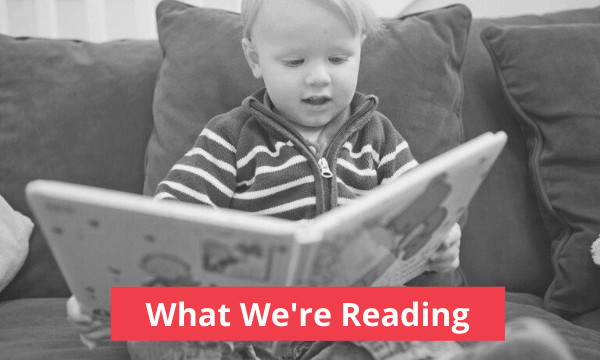
by Helen Shum | Mar 12, 2020 | Health and Development, Policy in Other States, Policy Trends
What We’re Reading
Improving Behavioral Health Care for Children in California, a report from California Children’s Hospital Association (CCHA) published in December 2019 outlines the major challenges to ensuring quality mental health care for children. An interview published last week with CCHA President & CEO Ann-Louise Kuhns delves into the background for the report, reminding readers that children across the country are in crisis. The report and interview are worthwhile reads for those in Oregon and other states who are seeking to improve mental and behavioral health care for children.
Summary
The number of children with mental and behavioral health needs in California and nationally continues to grow. Self-reported rates of mental health issues have increased among the state’s adolescents by 23 percent since 2005, and suicide is now the state’s second leading cause of death for youth between the ages of 10-24.
Left untreated, mental health issues can have significant negative impacts on a child’s future, including on their physical health, educational attainment, life expectancy, and future earnings. Conversely, investing sufficiently in children’s mental health can offer a protective effect against future adversity, nurture resiliency, and reduce the burden on educational, social service, and health systems down the line.
Those familiar with Oregon’s current childhood mental health care landscape will recognize similar themes and challenges.
A Graying Workforce, Not Enough Culturally-Specific, Bilingual Providers
California’s childhood mental health workforce is not robust enough to meet demand and the trendline is alarming. Nationally, there are only 8,600 child psychiatrists and 10,000 child psychologists. In California, the ratio of board-certified child psychiatrists to children in the state is 13:100,000. An estimated 45 percent of those doctors are over the age of 60, with retirement looming.
A shortage of providers is likely due to two reasons: working with children requires additional credentials, and those credentials don’t yield higher compensation compared to practitioners who only work with adults. In addition, the rapidly diversifying demographics of children in the state means that there are also severe shortages of bilingual providers and providers of color.
Systems of Care Are Not Aligned
Systems of care are often complex, bureaucratic, and are not in alignment with one another, resulting in confusion and frustration for families attempting to access care. Federal and state mandates meant to ensure access and parity of services for children often lack sufficient oversight or accountability. Providers shared that they spend an inordinate of time on paperwork, and that filling out paperwork for a new patient can take as much as two hours to complete.
As the report describes, “California’s pediatric behavioral health system is akin to the Winchester Mystery House, constructed asynchronously and illogically with haphazardly added rooms and doors that lead nowhere.”
Recommendations
The report includes recommendations that address access, quality, and accountability issues that are major barriers to meeting the mental and behavioral health needs of children including:
- Better enforcement of existing laws that ensure mental health parity for young people.
- Support for early intervention programs and integrated care models.
- Closing gaps in services, including increasing reimbursement rates, boosting investment in facilities and streamlining licensing and accreditation processes.
- Better coordination among providers and expanding e-health innovations and approaches like tele-medicine and tele-consultation.
- Greater investment in workforce training programs, including for providers who can deliver culturally and linguistically specific services.
Lessons for Oregon and Other States
According to Kuhns, the issues highlighted in the report are applicable to other states and nationally and she’s clear that states must lead the charge on system-level improvements.
From the Q&A:
“I think some of our recommendations, such as those having to do with enforcing mental health parity are national issues. The need for earlier intervention for children and adolescents also is universal. There’s a crisis for children across the board, across the country. Trying to help build resilience in children and help support families would be a good investment in our future, both in California and nationally. The same is true of our recommendations about supporting primary care providers to manage patients in their community practice so that children don’t have to wait so long for psychiatric treatment. We know that’s a model that works.”

by Helen Shum | Feb 27, 2020 | Federal Policy, News, Policy Trends
Beginning in March, the U.S Census Bureau will begin its count of the nation’s residents. Mandated by the Constitution every 10 years, the census informs a broad range of planning, policy making, and funding decisions made by the federal government.
In Oregon, the impact of the census on young children and families is significant, which is why Children’s Institute and others are supporting broad efforts to ensure that everyone in the state participates in the count. Programs like Head Start, the Supplemental Nutrition Assistance Program (SNAP), special education and SCHIP (State Children’s Health Insurance Program) are all tied to population statistics developed through the census.
A task force created after the 2010 census identified a number of hard-to-count communities. Among those groups are children under 5, immigrants, rural residents, and those with disabilities. This year, the hope is that additional outreach efforts will help to ensure that those communities are represented in the final tally. The Census Bureau is also adding language to the census questionnaire that offers more specific instructions to include foster children, grandchildren, and children who are not blood relatives.
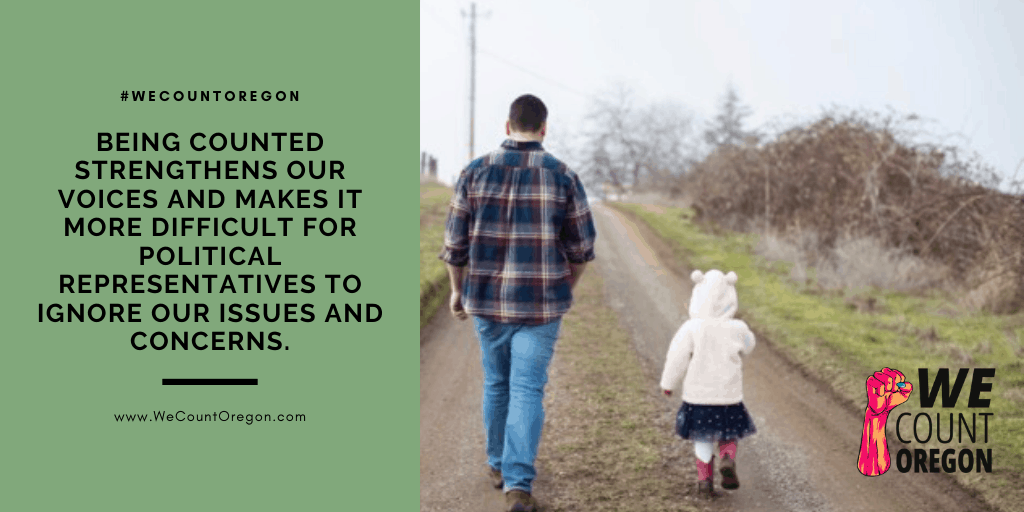
An image from the We Count Oregon campaign
We Count Oregon is organizing the state’s hard-to-count campaign working with a broad coalition of advocacy and policy organizations. Their website includes a number of resources to support participation, including a social media kit, training and event opportunities, and even a downloadable coloring book.
“We project that about 6 percent of Oregon residents are children under 5 and that means we need to reach all of their parents and guardians to compel them to accurately report these little ones to ensure they get the funding for services they deserve,” says Mandy Yeahpau, We Count Oregon’s communications director.
The Census Bureau is also running a Census in Schools campaign with specific resources for educators.
And Sesame Workshop, the nonprofit arm of the organization behind the iconic children’s show, has also joined in the effort, with a set of print and digital materials that can be downloaded and shared.
Households should begin receiving census information March 12, with the option to complete their form online, by phone, or through the mail.
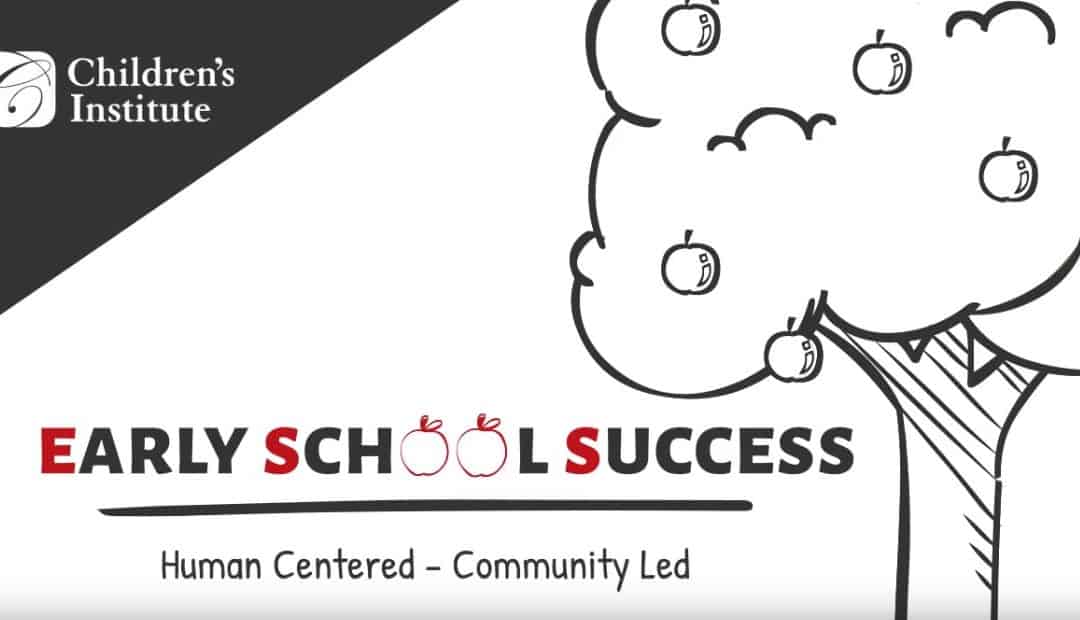
by Helen Shum | Feb 13, 2020 | Videos, Early School Success
We’re excited to share our newest video, a birds-eye overview of Early School Success.
If you are new to the program or want to learn more about how a community-driven process can improve connections between preschool and elementary school, take a look!
Click here to learn more about Early School Success.
Interested in more videos? See below.
Incentive Metrics for Kindergarten Readiness
SSA Funds for Early Learning
The Power of Partnership: Early Works at Earl Boyles

by Helen Shum | Jan 22, 2020 | What We're Reading, Oregon Research, School Readiness
Education Week’s latest report on education quality gives Oregon a C+ and a ranking of 32nd in the country. When broken down into three stages of a student’s life, (early foundations, school years, and adult outcomes) the analysis finds that Oregon does slightly better on indicators of school readiness.
The Quality Counts 2020 report card uses federal data to compare states across 13 indicators it refers to collectively as a “Chance-for-Success Index.” Taken together, they are meant to offer a more holistic view of educational opportunity. In addition to metrics like elementary reading scores and high school graduation rates, the analysis is informed by a number of non-academic early indicators that predict school readiness. These include the percentage of children in families earning at least 200 percent of the federal poverty level, parents’ educational attainment level, and the percentage of parents who are fluent English speakers.
Most states, including Oregon, fared best on the early foundations category, but struggled in later years. Education Week also notes the lack of improvement overall among states. Oregon’s worst performing early indicator was preschool access—with just 46 percent of 3- and 4-year-olds enrolled in preschool, slightly below the national average.
What’s the difference between Oregon and top performing states?
- In Massachusetts, the top-ranking state on the report card, 60 percent of 3- and 4- year-olds are enrolled in preschool, 14 percentage points higher than Oregon. And 64 percent of children in that state have at least one parent with a post-secondary degree vs. 52.5 percent in Oregon.
- All states with an overall score of B+ or higher on the index reported top-tier parent incomes. Massachusetts, New Jersey, Connecticut, Vermont, Minnesota, and New Hampshire all reported that more than 70 percent of dependent children lived in households earning at least 200 percent of the federal poverty level vs. 63.1 percent in Oregon.
Education Week’s full report is here. It also plans to issue a second installment in June on school finance and a K–12 achievement index in September.








